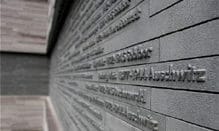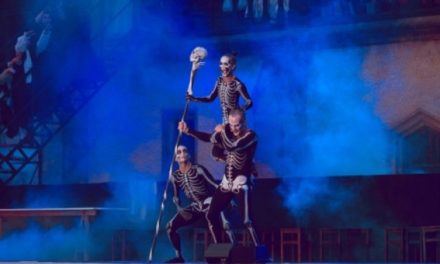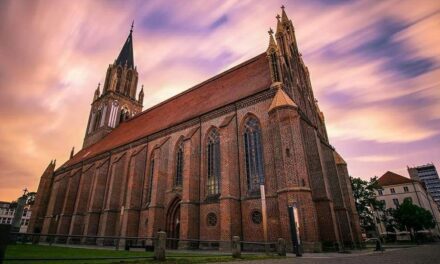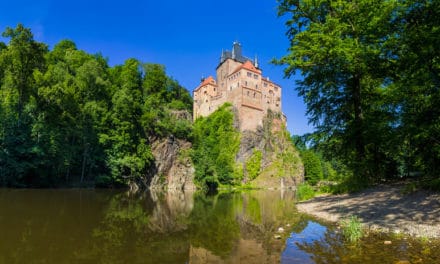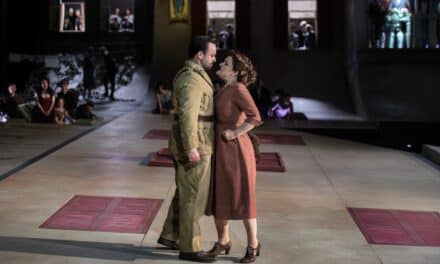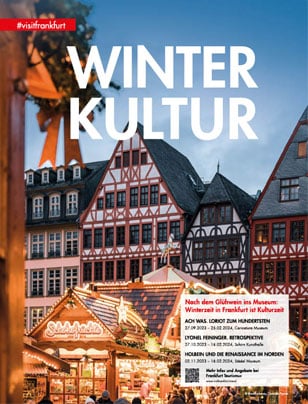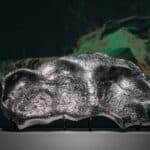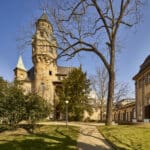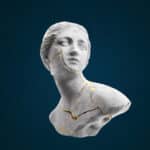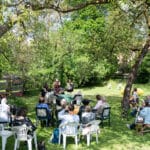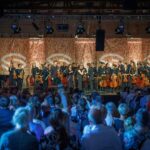The memorial for the murdered Jews of Wiesbaden was handed over to the citizens on 27 January 2011 at Michelsberg.
In 2006, the city council decided to hold an urban planning competition for the redesign of the area around the former Heinrich-Heine-Anlage on the Michelsberg. Its primary goal was to create a dignified place to commemorate all Jewish citizens of Wiesbaden who were murdered during the National Socialist dictatorship. Until now, there has only been a commemorative ensemble consisting of a column and three information plaques, which commemorates the main synagogue of the Jewish Community of Wiesbaden, which was attacked, desecrated and set on fire by the brown barbarians on November 10, 1938.
The memorial complex was built according to the plans of the Berlin landscape architect Barbara Willeke by the Wiesbaden Urban Development Company, exactly on the spot where the magnificent synagogue, built by Philipp Hoffmann in 1869 in the Moorish architectural style, once towered as the center of the liberal Jewish community. For some time now, a virtual reconstruction created by a working group at the Wiesbaden University of Applied Sciences under the direction of Edgar Brück has been a very impressive reminder of them. The award-winning photorealistic 3D visualization in the form of a computer animation can be viewed in a special memorial and information room in the foyer of the town hall, as well as a permanent exhibition on the life, suffering and murder of Wiesbaden's Jews, conceived and financed by the Active Museum Spiegelgasse.
While in the area of the new leisure and culture park at the Schlachthof an impressive, unprecedented artistic form of remembrance of the deportations that originated at that location at the time has been realized by the Frankfurt installation artist Vollrad Kutscher and the Wiesbaden sprayer Yorkar7, the memorial on the Michelsberg, which is almost overwhelming due to its architecture, size and purpose, serves to preserve the names of all Wiesbaden victims of the Shoah. Their historiographical investigation as well as that of the biographical data of the murdered were carried out by the city archive in cooperation with the Active Museum Spiegelgasse. Since its founding in 1988, the latter has drawn the public's attention to the fate of Wiesbaden's Jews in a variety of ways, for example by laying "stumbling stones" in front of their last self-chosen residences and by developing and presenting life-history "memory sheets".
The memorial on the Michelsberg, which marks the area of the former synagogue, is divided into two corresponding areas by the street layout. All the 1,507 names of the Jewish victims of Nazi racial madness from Wiesbaden that have been identified so far are collected on a volume of names illuminated at night. In addition, their dates of birth and, if ascertainable, their dates of death are recorded there. According to Jewish custom, it is a religious duty to remember the deceased by preserving their names. "Only those whose names are forgotten are really dead," says an old proverb. Since the Jewish people murdered during those years of horror were almost nowhere given their own grave and there was therefore no place where their relatives could go to commemorate them, this building once again has a very special significance. A touchscreen provides further information on the fate of the murdered and the history of the memorial.
On 27 January 2011, the national and international day of remembrance for the victims of the Nazi regime, the memorial was handed over to the Wiesbaden parliament in a dignified manner by the representatives of the municipal authorities. In the same year, she was awarded the Architecture Prize of the State of Hesse.

